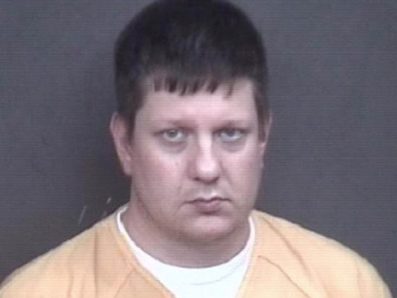
Chicago Police Officer Jason Van Dyke, 40, was convicted of second degree murder in the 2014 shooting death of 17 year old Laquan McDonald. Van Dyke is the first Chicago officer to be charged with murder for an on-duty shooting in about 50 years. Second-degree murder usually carries a sentence of less than 20 years, especially for someone with no criminal history but probation is also an option. Van Dyke was also convicted of 16 counts of aggravated battery — one for each bullet.
The second-degree verdict reflected the jury’s finding that Van Dyke believed his life was in danger but that the belief was unreasonable. The jury also had the option of first degree-murder, which required finding that the shooting was unnecessary and unreasonable. Legal experts say Van Dyke will likely be sentenced to no more than 6 years but that because he is an officer, it will likely be in isolation.
The verdict was the latest chapter in a story that shook Chicago residents soon after a judge ordered the release of the video in November 2015. Protests erupted and continued, demanding accountability for the shooting. The city’s police superintendent and the county’s top prosecutor both lost their jobs — one fired by the mayor and the other ousted by voters. It also led to a Justice Department investigation that found a “pervasive cover-up culture” and prompted plans for far-reaching police reforms.
The city had been preparing for possible demonstrations in a case that already sparked protests with many downtown businesses and City Hall closing early in anticipation of protests. Groups of demonstrators took to the streets for several hours after the verdict, chanting, “The people united will never be defeated,” and “Sixteen shots and a cover up.”
Prosecutors in Van Dyke’s trial called on multiple officers who were there that night in an effort to penetrate the “blue wall of silence” long associated with the city’s police force and other law enforcement agencies across the country. Three officers, including Van Dyke’s partner, have been charged with conspiring to cover up and lie about what happened to protect Van Dyke. They have all pleaded not guilty.
According to testimony, on the night of the shooting, officers were waiting for someone with a stun gun to use on the teenager when Van Dyke arrived. Former Police Officer Joseph Walsh, Van Dyke’s partner the night of the shooting, testified that Van Dyke said to him “Oh my God, we’re going to have to shoot that guy,” before arriving at the scene. Van Dyke was on scene for less than 30 seconds before opening fire and the first shot he fired was 6 seconds after he exited his patrol car.
The first responding officer said that he did not see the need to use force and none of the at least eight other officers on the scene fired their weapons. Video of the shooting shows that Officer Van Dyke was advancing on McDonald, while McDonald was walking away from him when the first shot was fired. McDonald was shot 16 times in 14–15 seconds and 9 of those shots hit his back as he lay on the ground. Toxicology reports later revealed that McDonald had PCP in his blood and urine.
Assistant special prosecutor Jody Gleason told the jury that Van Dyke contemplated shooting McDonald before he even encountered the young man, referring to testimony about what Van Dyke told his partner before arriving at the scene. “It wasn’t the knife in Laquan’s hand that made the defendant kill him that night. It was his indifference to the value of Laquan’s life.” Van Dyke was taken into custody moments after the verdict was read. He is scheduled for a sentencing hearing on October 31.
Read more
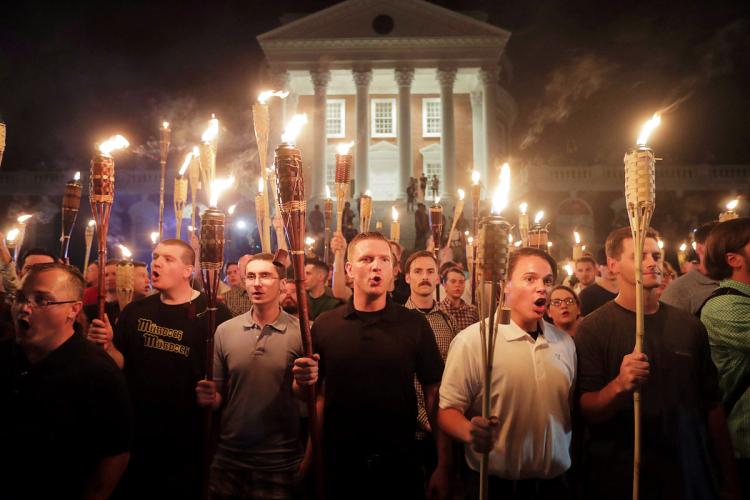
Federal prosecutors in Virginia have charged four white supremacists from California with conspiracy and inciting rioting at the deadly Unite the Right rally in Charlottesville in August of 2017. Last year’s protest left activist Heather Heyer dead after white supremacist James Alex Fields Jr. plowed his car into a crowd of peaceful counter-protesters.
Benjamin Daley, Thomas Gillen, Michael Miselis and Cole White are all members of a militant white supremacist group from California known as the Rise Above Movement, which espouses anti-Semitic views and meets regularly in public parks to train in boxing and other fighting techniques, according to an affidavit written by an FBI agent. According to The Anti-Defamation League, the Rise Above Movement members believe they are fighting against a “modern world” corrupted by the “destructive cultural influences” of liberals, Jews, Muslims and non-white immigrants. Members refer to themselves as the mixed martial arts club of the “alt-right” fringe movement, a loose mix of neo-Nazis, white nationalists and other far-right extremists.
U.S. Attorney Thomas Cullen said each defendant faces a maximum of 10 years in prison if convicted on the two counts they each face: traveling to incite riots and conspiracy to riot. The affidavit alleges the four men were “among the most violent individuals present in Charlottesville” in August of last year during a torch-lit march on the University of Virginia campus and a larger rally in downtown the following day. It says photos and video footage shows they attacked counter-protesters, “which in some cases resulted in serious injuries.” The men have also taken part in “acts of violence” at political rallies in Huntington Beach and Berkeley, California, and other places, the affidavit alleges.
Cullen said that the men also engaged in acts of violence in their home state of California at a series of political rallies, dubbing them “serial rioters.” At a news briefing, Cullen said “This is a group that essentially subscribes to an anti-Semitic, racist ideology, and then organizes, trains, and deploys to various political rallies, not only to espouse this particular ideology but also to engage in acts of violence against folks who are taking a contrary point of view.”
A Los Angeles judge denied bail for Michael Miselis, finding that he posed a risk to the community. Miselis’ attorney argued for his release, detailing how his client got his master’s at UCLA and worked as an engineer at Northrop Grumman for five years before being dismissed after his connection to Charlottesville became public. Prosecutor David Ryan argued against bail for Miselis, saying agents found smoke bombs, flares, and thousands of rounds of ammunition, mostly for assault weapons, in his home, where he had a wall hanging that said “88,” a common abbreviation for “Heil Hitler.” Ryan also said said Miselis, Daley and other members of their group also traveled to Germany and the Ukraine earlier this year and met with members of well-known violent white supremacy groups.
Cullen said investigators sifted through “an incredible volume” of video and still photographs to review the movements of the four men and determine whether they could claim they were only defending themselves after being attacked by others at the rally. He said prosecutors believe there was “no provocation” for them to engage in violence that day. The four men, he said, made their way to the rally with their hands taped, “ready to do street battle.” Then they engaged in punching, kicking, head-butting and pushing, assaulting an African-American man, two women and a minister who was wearing a clerical collar, Cullen said. Cullen also said a significant aspect of the case was that the four men had “extensive and robust” social media profiles and used social media to further their purposes.
We’d love to know what you think of this story. Let us know your thoughts in the comments section!
Read more

Bloomberg revealed a probe was started in 2015 regarding data center equipment run by Amazon Web Services (AWS) and Apple may have been subject to surveillance from the Chinese government via a tiny microchip inserted during the equipment manufacturing process at factories run by subcontractors in China. The chips were used for gathering intellectual property and trade secrets from American companies and may have been introduced by a Silicon Valley company called Super Micro. Though Apple, AWS and Super Micro deny knowledge of the claims or investigation, a probe that started 3 years ago is still open.
In early 2015, Amazon was looking to expand their web streaming services and began working with Elemental Technologies, based in Oregon. Elemental, which has government contracts, made software for compressing massive video files and formatting them for different devices. Its technology has been used to communicate with the International Space Station and funnel drone footage to the Central Intelligence Agency.
The chips were discovered after AWS hired a third-party security company to scrutinize Elemental’s products. The company examined the servers that customers installed in their networks to handle the video compression. Testers found tiny microchips, not much bigger than a grain of rice, nested on the servers’ motherboards that weren’t part of the boards’ original design. Amazon reported the findings to the US authorities. These servers were assembled for Elemental by Super Micro, who has their servers assembled by manufacturing subcontractors in China.
During the top-secret probe, investigators determined that the chips allowed the attackers to create a doorway into any network that included the altered machines. This kind of tampering is especially hard to accomplish because it means developing a deep understanding of a product’s design, manipulating components at the factory, and ensuring that the doctored devices made it through the global logistics chain to the desired location.
Investigators found that the tampered products eventually affected almost 30 companies, including a major bank, government contractors, and Apple Inc. Apple had planned to order more than 30,000 of its servers in two years for a new global network of data centers. Three senior insiders at Apple say that they also found malicious chips on Super Micro motherboards. Apple severed ties with Super Micro in 2016 for what they officially described as unrelated reasons.
Amazon, Apple and Super Micro deny any knowledge of planted chips though six current and former senior national security officials have detailed the discovery of the chips and the government’s investigation. One government official says China’s goal was long-term access to high-value corporate secrets and sensitive government networks. No consumer data is known to have been stolen.
We’d love to hear what you think. Check out our comments section and let us know!
Read more
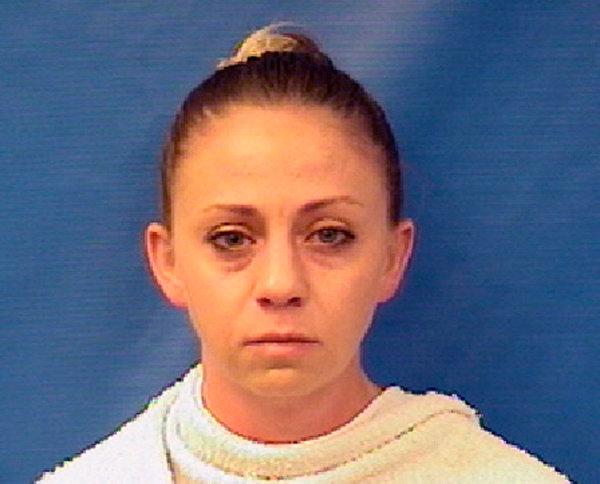
Dallas police Officer Amber Guyger, who fatally shot 26-year-old Botham Jean in his Cedars apartment, was fired just days after Police Chief U. Renee Hall said doing so would compromise the criminal investigation. A news release stated that Hall fired Guyger after an internal investigation found the officer had engaged in “adverse conduct” when she was charged with manslaughter three days after the shooting.
Guyger shot Jean, her upstairs neighbor, the night of Sept. 6. Jean, an accountant with PricewaterhouseCoopers, lived on the fourth floor in apartment 1478 of the South Side Flats. Guyger, an officer for four years, was his immediate downstairs neighbor. After entering his apartment that she mistook for her own. She entered the dark apartment after a long shift and believed Jean, who was unarmed, was a burglar.
After she shot him, Guyger called 911 in tears, “I thought it was my apartment,” she said repeatedly and apologized to Jean, “I’m so sorry.” Police arrived within four minutes of her call, and paramedics rushed Jean to Baylor University Medical Center, where he was pronounced dead. Guyger was charged with manslaughter three days after the shooting and has been on administrative leave since the shooting. She’s currently free on a $300,000 bond while she awaits trial.
There was widespread calls for action and protests demanding that Guyger be terminated. Chief Hall said that she couldn’t fire Guyger before an internal investigation was completed because of federal, state and local laws but she didn’t specify to which laws she was referring. Hall released a statement saying she didn’t want to risk interfering with a criminal investigation by making a decision about Guyger’s employment.
The Dallas Police Department turned over the investigation to the Texas Rangers shortly after the shooting. The Dallas County District Attorney’s office is also conducting its own investigation. Those investigations aren’t complete, but Hall said police were notified that a “critical portion” of the criminal investigation — the part that could have been compromised by an internal investigation — had been concluded over the weekend.
Guyger’s firing was supported by Mayor Mike Rawlings, who called it “the right decision in the interest of justice”. A statement from the mayor read “I have heard the calls for this action from many, including the Jean family, and I agree that this is the right decision in the interest of justice for Botham Jean and the citizens of Dallas. The swift termination of any officer who engages in misconduct that leads to the loss of innocent life is essential if the Dallas Police Department is to gain and maintain the public trust.”
Guyger’s attorney Robert Rogers said in a written statement that Hall “bowed to pressure from anti-police groups and took action before all of the facts had been gathered and due process was afforded.” Rogers said his client is “completely devastated by what happened.” The shooting, he said, was “a tragic mistake and words can never express our sorrow for the pain being suffered by those who knew and loved Botham Jean.”
Read more
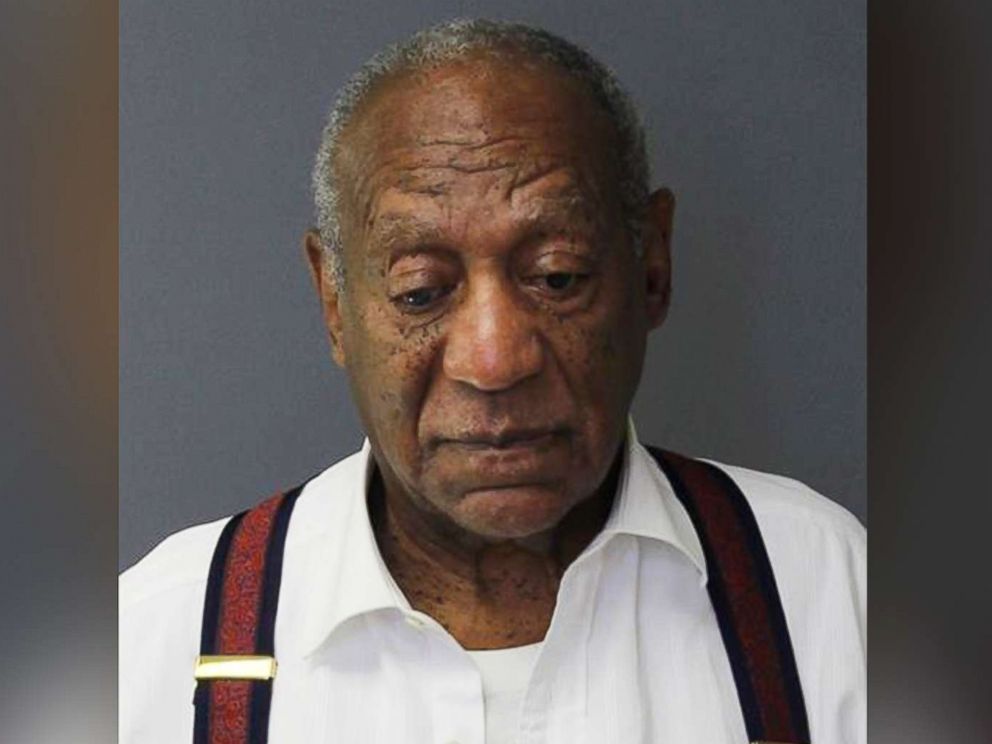
Comedian Bill Cosby was sentenced to three to 10 years in a state prison for drugging and sexually assaulting Andrea Constand at his home 14 years ago. Cosby, 81, will be eligible for parole in three years and could be released from prison and allowed to serve out the rest of his 10-year sentence under supervision in the community.
Judge Steven O’Neill said the evidence that Cosby planned the drugging and sexual assault of his victim was “overwhelming,” based on Cosby’s own words in a civil deposition. In the deposition, provided the year after the alleged assault, as Constand pursued a civil suit against him, Cosby admitted that he procured Quaaludes for women he wanted to have sex. Cosby also admitted that he asked a modeling agent to connect him with young women who were new in town and “financially not doing well. Judge Steven O’Neill ruled that the 2005 testimony could be presented to the jury in his criminal trial.
Months after his depositions, Cosby settled the case with Constand and the accusations quickly faded. In October 2014, a Philadelphia magazine reporter at a Hannibal Buress show uploaded a clip of the comedian calling Bill Cosby a rapist and commenting on his Teflon image. The clip went viral and soon after many accusers stepped forward. More than 60 women have accused Cosby of sexual assault or harassment, stretching back to the 1960’s but Constand’s case was the only one that led to criminal charges against the comedian. During interviews, all of the women gave similar accounts of blacking out after having a drink supplied by Cosby and later waking up during or after a sexual assault. Most said they stayed quiet because they never thought anyone would believe them since Cosby was wealthy and at the height of his career.
On April 26, he was found guilty of three counts of aggravated indecent assault for the 2004 drugging and sexual assault of Andrea Constand. Each charge carries a maximum of 10 years in prison but Judge Steven O’Neill said that the charges had been merged into one because they all stem from the same event. Constand, a 31-year-old Temple women’s basketball official he was mentoring at the time of the assault. She testified in detail at the trial about losing control of her limbs after taking pills given to her by Cosby, who served on Temple’s board of trustees and was the public face of the university. The pills, Constand said, left her unable to stop him from violating her at his suburban Philadelphia estate.
At the sentencing hearing, O’Neill aid, “No one is above the law, and no one should be treated differently or disproportionally.” “This was a serious crime,” O’Neill added. “Mr. Cosby, this has all circled back to you. The day has come, the time has come.” Cosby was also ordered to pay a fine of $25,000 plus the costs of prosecution — a total of $43,611 — as part of the sentence. Cosby’s attorneys have repeatedly said they plan to file an appeal in the criminal case.
Let us know what you think in the comments!
Read more
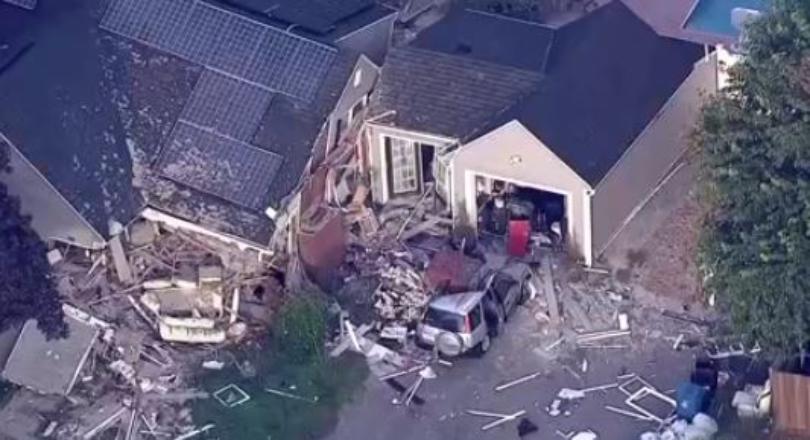
On September 13, dozens of explosions erupted in three towns in northern Massachusetts. As many as 70 fires, explosions and suspected gas leaks were reported to state police. At least 39 homes were affected in Lawrence, Andover, and North Andover. An 18 year old man was killed when a chimney collapsed on his car and at least 25 more people were reportedly treated for injuries. The fiery explosions forced residents of the three towns north of Boston to flee for their lives as the rapid-fire explosions took place.
Officer Ivan Soto of the Lawrence Police Department, whose own home went up in flames, tried to save Leonel Rondon, 18, who was killed after a chimney toppled by an exploding house crashed into his car. “We jumped on the car, and we were trying to pull the chimney,” Soto said. “We just want to get it off of him, you know. We wanted to save him.” Rondon was rushed to a Boston hospital but pronounced dead that evening.
Soon after the first fires, Lawrence City Councilor Marc Laplante was warning residents in the Colonial Heights neighborhood to evacuate but said traffic had become a problem. “People need to get out of this area safely,” he said at the time. “It’s really difficult because the traffic right now is horrendous.” Entire neighborhoods in the three towns were evacuated as crews scrambled to fight the flames and shut off the gas. Andover Fire Chief Michael Mansfield told reporters “It looked like Armageddon, it really did. There were billows of smoke coming from Lawrence behind me. I could see pillars of smoke in front of me from the town of Andover.” Aerial footage of the area showed some homes that appeared to be torn apart by blasts and engulfed in flames. Authorities believe up to 80 houses were damaged or destroyed.
Lawrence resident Ra Nam says he was in his yard when the smoke detector in his basement went off around 4:30 p.m. When he ran downstairs and saw the boiler on fire, he grabbed a fire extinguisher and put it out. Minutes later, Nam said he heard a loud boom from his neighbor’s house and the ground shook. Nam said a woman and two kids had made it out of the house but the basement was on fire. The three communities have more than 146,000 residents about 26 miles north of Boston, near the New Hampshire border. Lawrence, the largest of them has a population of about 80,000.
Officials say the cause of the explosions is still under investigation but that it could have been caused by an over-pressured gas line. Columbia Gas was upgrading the gas lines in the three towns when the dozens of homes suddenly went up in flames. Governor Charlie Baker has said it may be days or weeks before the 8,600 people displaced could return to their homes. He added that state and local authorities are investigating and checking each house serviced by Columbia Gas company, to shut off the gas line and make sure the home is safe. “This is still very much an active scene,” he said. “There will be plenty of time later tonight, tomorrow morning and into the next day to do some of the work around determining exactly what happened and why.”
In a statement, Columbia Gas said a total of 8,600 customers will be without service until safety teams can ensure that their homes and businesses are leak-free. Around 18,000 customers of National Grid electric company are also without power, after the lines were shut off to prevent any sparks that could ignite stray gas. By late Thursday, all of the fires had been doused but many areas remained silent and dark after residents fled and power companies cut electricity. Schools in all three communities were canceled for Friday and some schools were being used as shelters for residents.
Tell us what you think of this story in the comments!
Read more
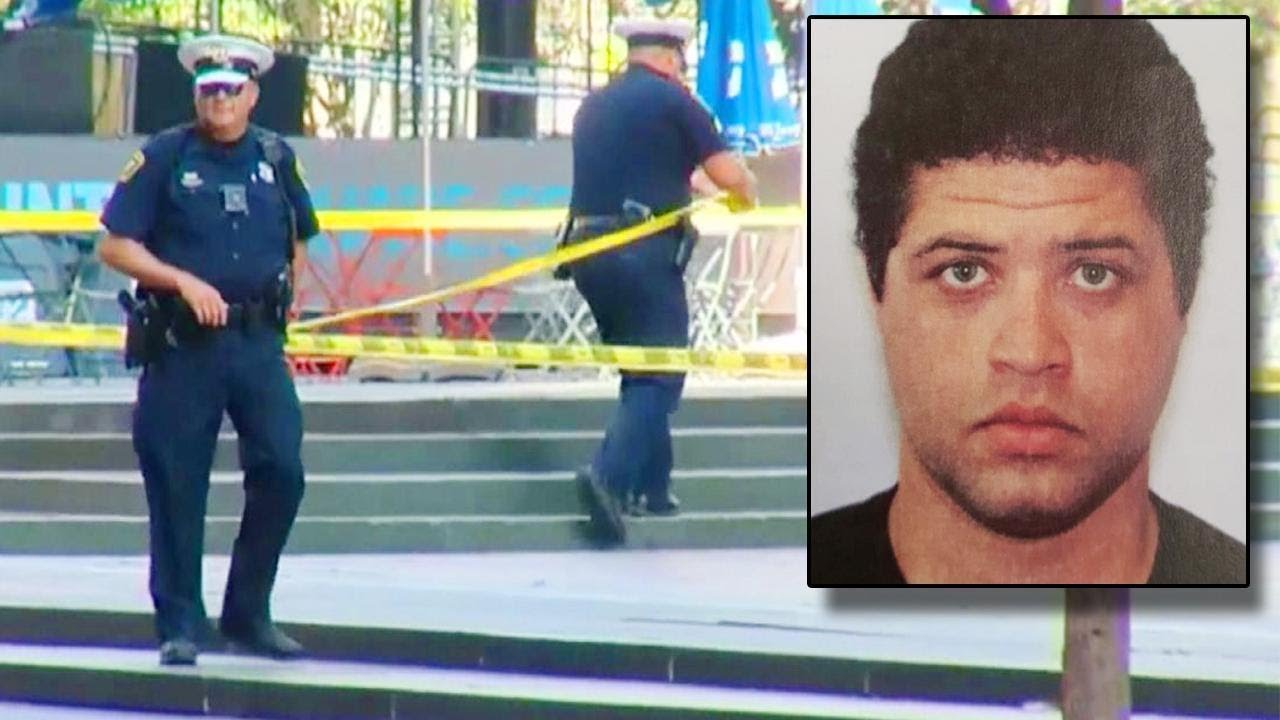
In Cincinnati, a gunman opened fire at a downtown bank, killing three people and injuring two others before he was shot and killed by police. Cincinnati Police Chief Eliot Isaac said the gunman, who they believe acted alone, fired more than a dozen shots from a legally purchased 9-millimeter semiautomatic pistol. Authorities have identified the gunman as Omar Perez, though a motive for the shooting is still under investigation. The gun used in the shooting was recovered at the scene along with multiple magazines and around 200 rounds of ammunition.
Police say Perez, 29, of Northbend, Ohio, has no known connection to the bank and it is unclear how he got to Fountain Square but that he entered multiple businesses before going to the bank. He opened fire in the building’s loading dock before continuing into the lobby area and firing more shots. Officers responded to a 911 call around 9:10 a.m. local time about an “active shooter” at the bank. Multiple officers then “engaged” the suspect, who was fatally shot multiple times.
Five people were shot, some multiple times, including three who died from their injuries. One person died at the scene and two victims died at the hospital. Those killed in the shooting were a grandfather, a father and a son. Richard Newcomer, 64, a father of 3 and grandfather of 8, who was supervising a construction project on the building’s third floor was shot as he entered the building. Luis Calderón, 48, a father to a 13 year old and 16 year old, was also killed as he arrived to work. He had moved to Cincinnati last year to work for the bank and provide a better life for his children. The third victim was identified as Prudhvi Raj Kandepi, 25, a programmer and consultant for Fifth Third who was described by family as someone who would give everything he could to friends and family.
Police have released security footage of the gunman “firing shots at anyone he sees” while inside the lobby of the building. The security footage shows Omar Enrique Santa Perez walking in the lobby with his gun held up and carrying a briefcase containing hundreds of rounds of ammunition over his shoulder. A security officer was seen helping people get to a safe location as the gunman was randomly firing shots at anyone he sees. Perez then turns toward the windows and fires shots at approaching officers. The body camera footage shows officers approaching the gunman and shooting through the glass of the lobby. The officers on the scene engaged the shooter within three and a half minutes of the first 911 call and fired 11 shots, taking out the gunman. Police later found that Perez’s gun had jammed during the four-minute rampage.
Cincinnati Mayor John Cranley praised the officers for ending the shooting quickly. “You could see in the video … the guy is shooting at the cops, you can see them not being afraid and engaging and ending it.” “If he had gotten on the elevator, gone up to a floor, if he had been there earlier or a little bit longer, many more people would have been killed.”
Fifth Third Bank is headquartered in Cincinnati but has locations across 10 states. The company released a statement via Twitter. “Earlier today, an active shooter entered our headquarters building in downtown Cincinnati. The situation is contained and the shooter is no longer a threat. Our thoughts and prayers are with everyone caught up in this terrible event. We continue to work with law enforcement as we ensure the safety of our employees and customers. We are grateful for the support and concerns from our neighbors throughout Cincinnati and the country.”
Read more
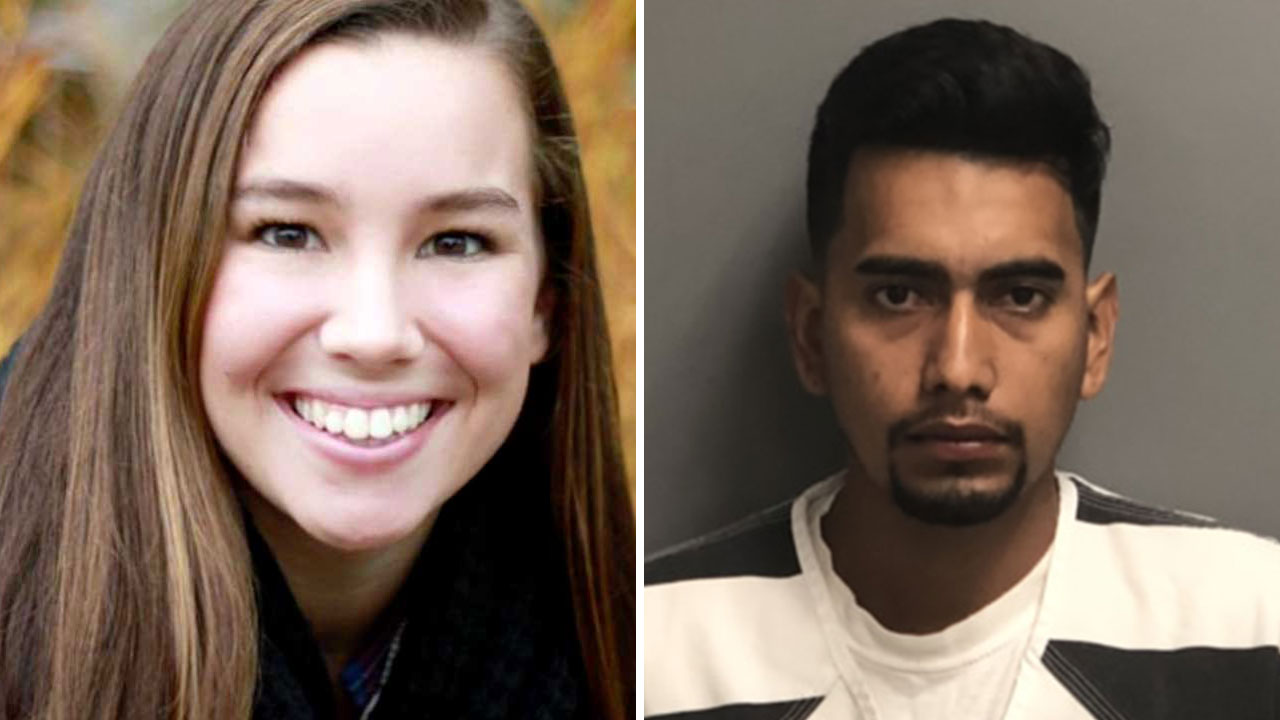
The father of murdered Iowa college student Mollie Tibbetts is demanding politicians and white supremacists stop using his daughter’s death to promote hate against immigrants. In an article for The Des Moines Register, Rob Tibbetts wrote, “Do not appropriate Mollie’s soul in advancing views she believed were profoundly racist. The act grievously extends the crime that stole Mollie from our family. The person who is accused of taking Mollie’s life is no more a reflection of the Hispanic community as white supremacists are of all white people. To suggest otherwise is a lie. Sadly, others have ignored our request, they have instead chosen to callously distort and corrupt Mollie’s tragic death to advance a cause she vehemently opposed.”
Tibbetts doesn’t want to see his daughter used as a “pawn in others’ debate,” he said. “She may not be able to speak for herself, but I can and will. Please leave us out of your debate. Allow us to grieve in privacy and with dignity. At long last, show some decency. On behalf of my family and Mollie’s memory, I’m imploring you to stop.”
Rob Tibbetts also addressed animosity towards immigrants at his daughter’s funeral when he said “the Hispanic community are Iowans, they have the same values as Iowans. As far as I’m concerned, they’re Iowans with better food.” “To the Hispanic community, my family stands with you and offers its heartfelt apology. That you’ve been beset by the circumstances of Mollie’s death is wrong. We treasure the contribution you bring to the American tapestry in all its color and melody.”
Before she went missing, Tibbetts’ brother dropped her off at her boyfriend’s house so she could dog-sit. Her family reported her missing the next day after she did not show up for work. The last time anyone saw Tibbetts, 20, was around 7:30 p.m. on July 18th as she was jogging in Brooklyn, a community of 1,500 people in eastern Iowa. According to her boyfriend, Dalton Jack, Tibbetts had sent him a message saying she was heading out for some exercise as part of her typical routine. A massive ground search involving more than 200 people broken up into 37 teams was conducted on July 20 encompassing the farmlands and fields within a five-mile radius of Brooklyn, with helicopters hovering above, according to authorities. Investigators had received more than 1,500 tips and conducted more than 500 interviews in the case.
The investigation led to 24-year-old Cristhian Bahena Rivera of rural Poweshiek County, an undocumented farmworker from Mexico who has been charged with first-degree murder for her death. Investigators say their search led to Rivera after they acquired surveillance camera footage that showed Mollie running, as well as the travel patterns of a vehicle believed to belong to Rivera. After reviewing the video, they determined that Rivera was one of the last people to see her running.
During the police interview, Rivera said that he had seen Tibbitts before and when he saw her running on July 18th, he began following her. He parked his car and began running alongside and behind her. At some point, Mollie took out her phone and told him “You need to leave me alone. I’m going to call the police” and then she took off running. Rivera told police that he got angry and chased her down but that he blacked out and woke up at an intersection in rural Poweshiek County. He told investigators he realized he had put the woman in the trunk of his car and when he took her out, he saw blood on the side of her head. He then drove to a rural cornfield and left the body in the field, covering it with corn leaves. Investigators said that after the interview, Rivera led investigators to her body.
Read more

In Jacksonville, Florida, authorities say a man opened fire at a restaurant hosting a Madden 19 video game tournament, killing two people and wounding 10 before killing himself. One person was also injured while trying to escape. The shooter has been identified as David Katz, a 24-year-old gamer from Baltimore, Maryland. Katz’s motive in the shooting remains under investigation, police said.
Katz, like many other gamers, was in town for the tournament at GLHF Game Bar at the Jacksonville Landing, a downtown shopping and dining complex. Witnesses said he had been eliminated from the tournament the day before when two other players beat him. Dennis Alston, one of the gamers who beat Katz, said that he tried to shake the shooter’s hand after the game but that Katz refused his hand and stared at him blankly. Alston said that he noticed Katz had returned to the tournament the following day wearing the same clothes.
Katz went by the gaming naming “Bread” and previously won Madden tournaments in 2017. Authorities say Katz walked past patrons in other parts of the restaurant and then opened fire on his fellow competitive gamers before killing himself. The Jacksonville Sheriff’s Office identified the victims as Eli Clayton, 22, and Taylor Robertson, 28. Both were competitive Madden players, and Robertson had won the Madden Classic. Authorities said Katz had legally purchased two weapons in Baltimore over the past month and one of the weapons had a laser sight that attached to the gun.
Gunshots and piercing screams echoed through the Twitch live stream of the tournament in real time, leaving millions of helpless online viewers shocked before the live stream was cutoff. Shortly after 1:30 p.m., 911 calls started pouring in about a shooting and officers were on the scene within two minutes. About a dozen firefighters with the Jacksonville Fire and Rescue Department were training in the structure just north of the Landing when the gunfire rang out.
They treated the “walking wounded” outside the restaurant, then made their way inside to find flipped tables and broken dishes scattered across the floor. They made their way through the restaurant and found the three deceased in the gaming room: Taylor Robertson, 27, of Ballard, West Virginia; Eli Clayton, 22, of Woodland Hills, California; and the shooter, later identified as David Katz, 24, of Baltimore.
Both Elizabeth and Richard Katz are cooperating with investigators and have told authorities that their son had mental health issues. Katz underwent treatment for psychological and emotional issues during his parents’ divorce and highly contentious custody battle in 2006. He was once placed on an antipsychotic medicine used to treat schizophrenia. The alleged gunman was also placed on two antidepressants.
Read more
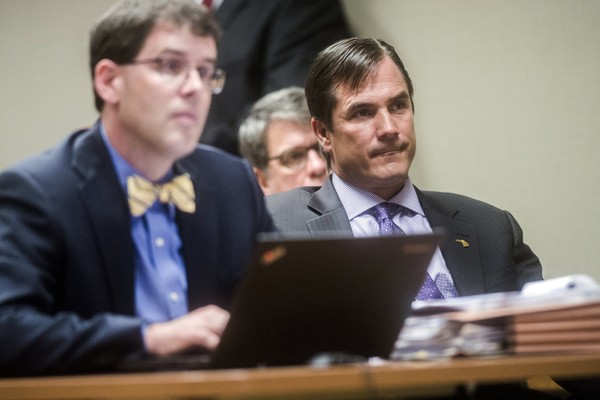
Michigan’s state health director Nick Lyons is facing trial for involuntary manslaughter over the deaths of two men amid an outbreak of Legionnaires’ disease in Flint after the city switched its water supply to the Flint River in an attempt to save money. The Flint region’s 2014-2015 Legionnaires’ disease outbreak that killed 12 people and sickened another 79 people. Michigan has admitted 12 people died in the outbreak, but a recent report by PBS “Frontline” has found the death toll from the water crisis in Flint may be higher than Michigan officials have acknowledged.
Judge David Goggins issued a ruling sending Nick Lyon’s criminal case to a full trial, meaning the judge believes there is enough valid evidence for a jury to consider. The ruling came at the end of a 10-month preliminary hearing that started in September and wrapped up in early July after more than 25 days of testimony. Lyons is the highest-ranking state official to face charges so far over Flint’s water-poisoning crisis. He’s also being charged with willful neglect of duty and misconduct in office for the deaths of John Snyder and Robert Skidmore. The involuntary manslaughter charge is a felony punishable by up to 15 years in prison. Lyon’s felony misconduct in office charge is for allegedly obstructing academic researchers from studying the outbreak, which carries a sentence of up to five years in prison.
Both men allegedly died from Legionnaires’ disease caused by Flint switching its drinking water source to the Flint River in 2014. They did not ensure that the water was properly treated to prevent corrosion in old plumbing. This caused lead and other metals to leach into the water, exposing residents and risking permanent neurological damage to local children. The improper water treatment also interfered with disinfectants and caused the release of iron and other bacterial nutrients into the water, which can spur the spread and growth of Legionella bacteria. When those germs are aerosolized and inhaled from sources such as hot showers, humidifiers, and water coolers, they can cause a deadly form of pneumonia called Legionnaire’s disease.
Flint experienced a surge in Legionnaire’s disease after the water switch, with cases totaling around 100 and leading to at least 12 deaths, including Skidmore and Snyder’s. Researchers with the Centers for Disease Control and Prevention genetically linked the bacteria infecting patients to those found in the city’s water. Prosecutors argued Lyon, the Michigan Department of Health and Human Services director, waited too long to alert the public to an outbreak of Legionnaires’ disease in Flint during the water crisis. He allegedly knew about the outbreak in early 2015 but waited nearly a full year before alerting the public. Both men were said to be healthy and active prior to their hospitalizations. Lyon’s defense attorneys argued he was not negligent in the men’s deaths and that prosecuting a public official who did his best amid a wide-ranging crisis would have a chilling effect on other public employees doing their duties. They pointed out Skidmore and Snyder “would have received the same medical treatment” even if Lyon had made an announcement sooner.
In a statement issued after the ruling, Governor Rick Snyder praised Lyon’s work during the Flint water crisis and said Lyon would remain on the job as Michigan Department of Health and Human Services director during the trial. An additional 14 current or former state and local officials have been criminally charged in connection with the water issues.
State officials now say that the city’s water meets federal standards for lead and other contaminants but the water can still pick up toxic ingredients from contaminated pipes. For now, residents need to continue drinking bottled or filtered water until the city’s plumbing is replaced, which the city is working to do by 2020.
Read more












